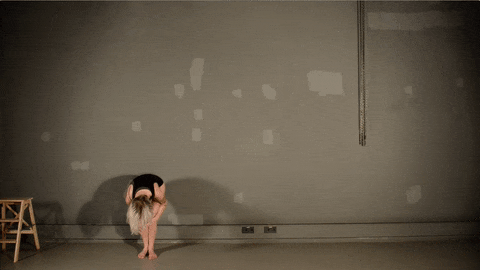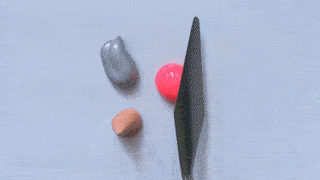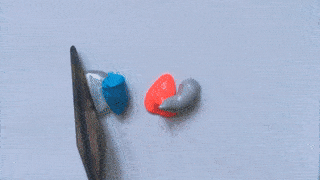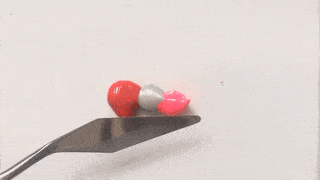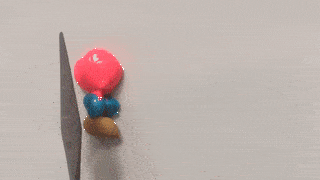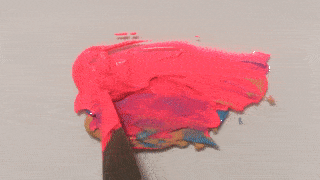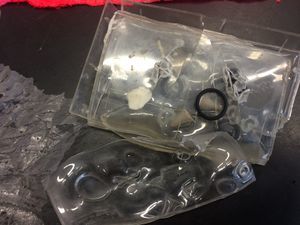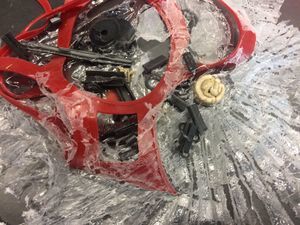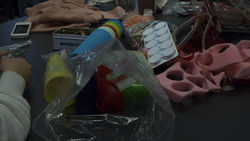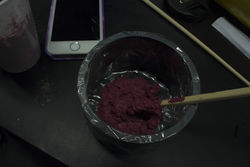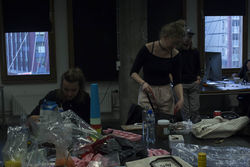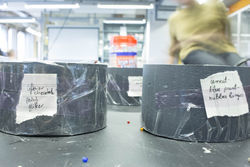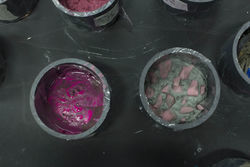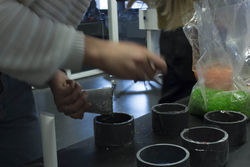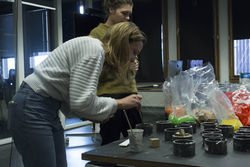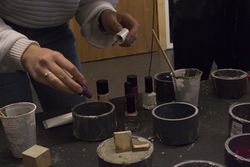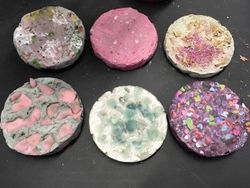User:MarijeElisabeth
Contents
MARIJE ELISABETH
I solemnly swear I will make and make and make and make and make and make and make
Get in touch
E-mail 0882958@hr.nl
Department Graphic Design
Images
What is craft (baby don't hurt me, don't hurt me, no more)
The first week of the practice felt as if I was introduced into a new world. It was filled with discussions about craft and fusion; the skill that has been assigned to our group. After the first gathering with the whole class, our group came together to discuss fusing. What the hell is fusing? It turned out to be really con-fusing. We found that for everything one can argue that it is fusing or that it is not fusing. One example for us was felting. Some of us thought that it is fusing, because you put two components (water and soap) together to change a material (wool into felt). While others thought it wasn't really fusing, because the material (wool) doesn't change its composition. It stays wool, only the form changes. Those opinions on fusing and also the question about what is craft and what is not, made for an interesting discussion. And finally this small summary of or thoughts on fusing:
Fusing is the beginning of all living things. It is the process of combining
two or more distinct entities into a new whole. Having that said: we are all
products of fusing.
Other than making babies, there are endless possibilities with fusing.
Endless entities; materials, liquids, cells, atoms, matter, code, etc. Endless
ways of arguing if a certain combination of entities can be seen as fusing.
Fusing is a paradox.
Fusing is irreversable but not necessarily permanent.
Fusing is confusing.
Colour-mixing - Historical Example
I wanted to explore colour-mixing. I started my research with a material I already had; paint. I documented the paint mixing with video's and swatches of the different mixes.
Melting = Fusing?
Transfer Heat Press Open Course
I have attended the Open Course about the Transfer Heat Press, just because I was curious about the machine. While taking the course, I discovered that there's way more to it than just the old fashioned shiny foil on paper and videoflex on textiles. People made actual paper from coffee with it. You can melt stuff with it. Someone made a textile made out of banknotes with it. So many possibilities! And if there's something I like, it is to have a lot of things to do with one machine. So I went and experimented with the Heat Press. I already had materials left from the shared example, so I brought them to the Heat Press hoping I could melt them together. But unfortunately almost all the materials I had we're made from rubber, and the Heat Press couldn't melt it. I did have some plastics with me, but not enough to get interesting results:
I also tried to melt some of the rubber things in between clingwrap:
That did give something interesting results, but not quite yet to my liking. So I continued trying something that I had in mind while also thinking of my historical example: to mix paints under the heat press. I tried this on the spot by putting paint drops on clingwrap and folding that, but the paint wasn't dry at the point I put it in the heat press. Resulting in a big mess on the baking sheets because the pressure of the press caused the paint to spread everywhere. However, the clingwrap itself did melt with the paint on it. It made an interesting texture, so I wanted to explore this method further. I think that if I prepare clingwrap with paint and let it dry before using the heat press, it will give me less mess and hopefully similar results. To be continued..
Booklet
We have had some discussions about what we wanted to make for our shared example. At first we thought of all making something seperately and then fuse it together. But we thought that would maybe not be 'shared' enough. So we decides to really make something together. We ended up making tiles, but not just tiles; we fused unexpected materials together with cement in molds. Which resulted into some pretty unusual tiles:
Why I make
I am the one to want to know everything about everything.
I want to discover every person and every shape. I want to get to know every material and every story. I want to know what the world has to offer, one bit at a time.
I have always been a curious person. Ever since I existed, I wanted to know everything and wanted to feel everything. When I would find something on the streets I loved to pick it up, contrary to my parent’s likings, and bring it home to see what it was and what I could do with it. I feel like making is essential to discover the magnificence of the world. While making you’re able to explore new ways of looking at your surroundings. Which gives you the opportunity to keep exploring and to keep discovering. Making is a way to provide yourself with stepping stones from one method to another material. It is a way to keep expanding your world of imagination. So keep making. Never stop creating. Make pretty things, make ugly things. Make to feel, make to explore, make to see, make to hide, make to reveal.
I make to see the world.

